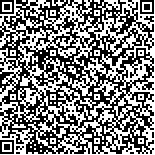下载中心
优秀审稿专家
优秀论文
相关链接
摘要

随着城市化进程加快,自然地表物理结构及属性的变化使得城市不透水面不断增加,进而造成城市土地覆盖类型剧烈变化,极大地影响着其环境质量和生态循环。因此,探讨不透水面的空间变化规律,对建设生态、和谐、宜居城市变得极为重要。本文选取新疆维吾尔自治区(简称新疆)典型城市(乌鲁木齐、喀什、哈密及克拉玛依)主城区为研究区,通过对Sentinel-2A/B影像L2范数归一化处理,结合增强型归一化差值不透水面指数ENDISI(Enhanced Normalized Difference Impervious Surface Index),采用最大类间方差法(OTSU)自适应确定阈值,提取2017年和2019年新疆典型城市不透水面。结果表明:L2范数归一化处理与ENDISI结合能较好的突显不透水面与非不透水面的差异;OTSU自适应确定的阈值能够很好的区分不透水面,经示例验证(2019年乌鲁木齐主城区),不透水面提取结果总体精度为86.60%,Kappa系数为0.73。通过对不透水面空间差异分析可知:从剖面线角度分析得出乌鲁木齐北部、喀什中部和北部及哈密中东部和北部ENDISI指数值均显著增加,而克拉玛依北部和中西部区域ENDISI指数值增加较少;从不透水面盒维数分析中得出,新疆典型城市的盒维数值均呈增加趋势,城市结构复杂度不断增强,其中哈密盒维数值最大,乌鲁木齐盒维数值最低,且哈密的盒维数值变化幅度最大,克拉玛依的盒维数值变化最小。本文可为新疆典型城市内涵式发展提供科学指导,为干旱区城市生态环境保护提供理论依据。
As the process of urbanization accelerates, changes in the physical structure and attributes of the natural surface have increased the impervious surface of cities, resulting in drastic changes in the types of urban land cover, which greatly affect environmental quality and the ecological cycle. Therefore, exploring the spatial structure of urban impervious surfaces crucial to urban ecological environment protection and urban green space planning.The main urban areas of typical Xinjiang cities (Urumqi, Kashgar, Hami, and Karamay) are selected as the study area in this work. First, the L2 norm of Sentinel-2A/B images is normalized to weaken the urban bare soil interference information in arid areas. Combined with the Enhanced Normalized Difference Impervious Surface Index (ENDISI), the maximum between-class variance method (OTSU) is used to adaptively determine the threshold, and the impervious surfaces of typical cities in Xinjiang in 2017 and 2019 are extracted. Second, the spatial differences of the ENDISI values in each direction of impervious surfaces in the study area are analyzed with the profile line method, and the box dimension method is introduced to dissect the spatial structure characteristics of impervious surfaces in different time phases and reveal the law of urban spatial structure changes.Results show that the combination of L2 norm normalization treatment and ENDISI can effectively highlight the difference between impervious and non-impervious surfaces. The threshold value determined by OTSU adaptively can distinguish impervious surfaces well, and the overall accuracy of the impervious surface extraction results is 86.60% with a kappa coefficient of 0.73 as verified by an example (2019 Urumqi main urban area). With the junction area of a city and bare soil as the research object, the classification effects of ENDISI, NDBI, and UI methods are compared, and the accuracy is verified using the visual interpretation method. The results show that ENDISI’s extraction effect is the best, and its extraction accuracy for urban contours and bare soil areas is the highest (83.18%). NDBI’s extraction effect is relatively poor (78.38%), and UI’s extraction accuracy is the lowest (60.18%).The analysis of the spatial differences of the impervious surfaces reveals that the ENDISI values for northern Urumqi, central–northern Kashgar, and central-eastern and northern Hami increase significantly from the perspective of profile lines, but the ENDISI values for northern Karamay and central-western regions increase only slightly. The analysis of the box dimension of the impervious surface shows that the box dimension values of typical cities in Xinjiang and the urban structure complexity are increasing. Among these cities, Hami and Urumqi have the highest and lowest box dimension values, respectively; Hami has the largest variation in box dimension values, whereas Karamay has the smallest. In this study, a new method of extracting urban impervious surfaces in arid areas is proposed. The method reveals the change law of impervious surfaces of cities in various directions, provides scientific guidance for the connotative development of typical cities in Xinjiang, and serves as a theoretical basis for the protection of urban ecological environments in arid areas.

